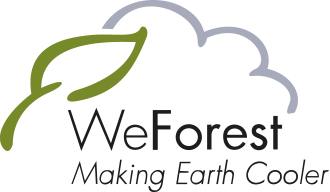
This is the first full-year progress report for our project with Fundación Vida Silvestre and WWF-NL in Misiones, Argentina, home to one of the largest remaining sub-populations of jaguars.
The project works with smallholder farmers to transition away from conventional subsistence agriculture and restore their farmland into forest patches by establishing agroforestry systems to grow a popular cash crop, yerba mate. Alongside this, 141 hectares of forest will be restored through conservation and ecological restoration (which incorporates full and enrichment planting). In this way, the surrounding jaguar habitats in the two provincial forest parks will be both connected and protected.
Once the 24 farmers were on board, the year saw a great deal of effort put into building trust between them and the project partners – including the local institutions that will be providing technical support. It was vitally important to get these relationships off to a strong start for this long-term collaboration.
By the second half of the year, the farmers were preparing their yerba mate agroforestry plots and starting to plant. The project faced the effects of El Niño towards the end of the year, and with no continuous dry spell water access improvement, soil preparation and seedling planting activities were temporarily delayed – but the field team, along with the farmers, had caught up by the end of December, and all activities were concluded.
The project is funded by both WeForest and WWF-NL at a roughly 40%/60% split. When we report numbers – families engaged, supplies distributed, hectares restored, activities carried out, etc – we’re referring to the project as a whole rather than just the WeForest-funded portion.
In this video, field assistant Jonatan Villalba gives an overview of the project’s activities earlier this year.
By late 2022 all the paperwork was done and during 2023 the primary focus has been cultivating trust and instilling confidence among the 24 families participating in our project, who will receive support to engage in a new and sustainable approach to farming: the implementation of agroforestry systems.
The conversations with the farmers focused on explaining the project, the activities that would be developed, and discussing the importance of conservation in the context of climate change. Although the region still has a lot of vegetation, farmers are beginning to feel the effects of water scarcity during dry periods. The agricultural system in Misiones involves low-tech manual labor carried out by the family, and is based in the conventional practice of clear-cutting the forest to expand the productive areas (in Argentina, deforestation is not illegal). For this reason, the project involves various activities on the properties, such as the enrichment of degraded forests and planting trees in clear-cut areas to increase the connectivity of fragments, alongside the implementation of agroforestry and best practices to improve productivity.
The field team conducted a diagnosis of each participating property, identifying the necessary improvements needed to enhance production. In addition to starting agroforestry systems, producers are receiving support for other productive activities that they have indicated, such as livestock farming and horticulture. Adjustments are also being made to the springs on all properties, improving water access for the families.
This map shows the 24 farms where the agroforestry plots are being established. 2023’s goal was 25 families, but unfortunately one has dropped out; they will be replaced during the recruitment of the families for 2024. The two provincial parks – both well-preserved areas of Atlantic Forest – sandwich this region of agriculture and homesteads: Cruce Caballero to the west and Yabotí Biosphere Reserve to the east.
Once the participating farmers were recruited, their farm boundaries were mapped in February, and the farmers were also trained in how to use GPS. Several other group training sessions and workshops were organised during this time, some in collaboration with our technical and implementation partners: the INTA (National Institute of Agricultural Technology), INAFCI (Undersecretariat of Family, Peasant, and Indigenous Agriculture), and the municipality of San Pedro. The participating farmers were the targeted audience for the sessions, but they were open to anyone, and the average participation at each was 35 people.
The schedule of these workshops is shown below:
Yerba mate harvesting best practices
The benefits of land use planning at farm level
Soil preparation best practices: workshop provided by INTA and INAFCI
Native tree species seed harvesting techniques (left)
Yerba mate production & commercialization: opportunities for agroecological and organic yerba mate, by Diego Chifarelli, a researcher from INTA and the Universidad Nacional de Misiones
Engaging the new group of farmers for 2024 started in August 2023, and was made much easier by the fact that we already had a list of 54 farmers who were interested – they’d been invited to the meetings by their neighbours who are already participating! The 31 farmers (to meet the 2024 target) will be selected by the field team in early 2024. Like this year’s participating farmers, all the new families will also come from Paraje Alegria. Focusing on this one area improves logistics and consolidates the project.
One aspect still to be finalized is an agreement or a common understanding of a “no deforestation policy” with the farmers that participate in the project. So far, there was no case of deforestation among the farmers that are participating, but there should be a written agreement signed by the farmers to assure that this continues to be the case.
Photo by Jonatan Villalba (FVS, in foreground). Back row: Omar Masnowski (field assistant provided by San Pedro Municipality, recently hired by FVS), Louise Tideman and Liz Oates (WeForest), Jorge Stelmaszczuk (technician from INAFCI), Guilhermo Ramisch (researcher from INTA (National Institute of Agricultural Technology). Front row: Oscar Nuñes (field assistant provided by San Pedro Municipality), Claudia Amicone and Lucia Lazzari (FVS), Cris Yuri, Natalia Guerin and Kenny Helsen (WeForest).
A strong local group primed for success
One of the strongest aspects of the project is the commitment of the people providing technical and implementation support to WeForest, WWF and FVS to carry out the project on the ground. They are affiliated to different institutions, so FVS has signed partnership agreements with those institutions. As the number of farmers will increase as the project progresses, they are discussing adding further members to support the activities during the next few years.
The project’s activities started later than expected, partly as farmer recruitment had taken longer than expected (see above), and partly due to the heavy rains which delayed the activities (agroforestry, planting and improvement of water access). In the second half of 2023, these activities were carried out as weather conditions allowed. At the time of writing 90% had been completed, with the only remaining task being to finalize the improved water access for some of the families. To do this, at least a week without rain is required!
Establishing the agroforestry systems
Each participating family agrees to devote a total of 4 hectares of their land to the project. Of these, the agroforestry plot will cover one hectare and combine yerba mate with native trees. In the first quarter of 2023, soil preparation started. In all farms, the INTA and INAFCI technicians recommended increasing the soil pH by applying limestone. They provided a furrower and trained the farmers in its use, and distributed the limestone with a lime spreader.
The INTA and INAFCI technicians also support the farmers in determining the best species to use for ground cover species, aiming to reduce the use of herbicides. The most common species used to cover the soil is ryegrass.
By November the agroforestry and native tree seedlings had been distributed:on average 2,350 seedlings to each farmer, totalling 24,500 seedlings. The native species are planted at the same time as the yerba mate, starting in August, when it’s not too hot yet and there’s enough rain. There is no planting here during the winter (June–August) due to frost, but there is no dry season, so the window for planting is usually bigger than in Brazil where we have a short rainy season – but this year, due to the constant rains, the planting period was extended until December.
Where do the seedlings come from?
A small community nursery run by a group of farmers is producing all the yerba mate seedlings for the project; their production comes from INTA’s improved seedlings. Three small nurseries (a family-run agricultural school nursery, an FVS nursery and a commercial nursery) will provide the 44 native species for the enrichment and full planting. A forest engineer provides technical support for all the nurseries. Photo © German Martinez
All supplies needed to establish and maintain the agroforestry plots are provided by our project partner on the ground, FVS. Each farmer receives 2 tons of limestone per hectare, a hand saw and some pruning shears (for proper management of the yerba mate), plus fertilizer and, of course, the seedlings.
No money changes hands between FVS and the farmers, and their contribution is with in-kind labour in all activities. So far, this arrangement is working quite well: so much so that some farmers are applying the improvements in their yerba mate plantations in other areas not supported by the project, and using their own money to pay for more supplies such as limestone.
This video shows the landscape, the farms, the forest remnants and the conventional yerba mate plantations. In many of the farms, as well 0.5 ha of new agroforestry planted from clear-cut plots, we are also transitioning 0.5 ha of conventional yerba mate by adding native species and improving management.
Enrichment and full planting
In addition to their 1 ha agroforestry plots, each farmer supported by the project will devote 2 ha to enrichment planting and 1 ha to full planting.
These farmers mostly live in a village called Paraje Alegria, which is located between two provincial forest parks: Cruce Caballero to the north west and Yabotí Biosphere Reserve to the south east. This agricultural and pastureland in between was once all forest, so the farms here often contain patches of forest that have been logged in the past or are degraded, and which have a low diversity of species.
In these patches, enrichment planting – which means planting at a low density, in this case 230 trees per hectare – is enough to boost the recovery of these forests and increase biodiversity. Full planting, on the other hand, means planting around 600 seedlings per hectare. This takes place in areas where the forest has been clear-cut.
Native tree seedlings were distributed to all farmers by November, and they had planted them by December. The species used are native tree species that are important in these ecosystems and that need to be reintroduced, such as Peltophorum dubium (canafístula – a hardwood species), Jaracatia spinosa (wild mango – edible), Maclura tinctoria (old fustic/dyer’s mulberry – medicinal and timber), Bastardiopsis densiflora (timber, honey and medicinal), and the critically endangered Paraná pine or Araucaria angustifolia, which is of great symbolic, cultural and landscape value in the region, a natural monument protected by law.
By transforming the agricultural model here to agroforestry, as well as ensuring sustainable livelihoods for farmers, increasing productivity and boosting incomes, the project will connect the remaining patches of forest, creating space for the free movement of jaguars (Panthera onca). It will also reduce agricultural expansion into the forest and lessen the pressure on its resources. The jaguar is the largest feline of the Americas, and this top predator is a near threatened species due to its decreasing population. Our partner in the Misiones project, Fundacion Vida Silvestre, has been working in Upper Parana since 2006 with support from WWF Latin America to increase and stabilize jaguar populations.
Monitoring and Evaluation allows us to deliver the outcomes we need. By designing a roadmap, collecting relevant data, conducting systematic analyses and reporting, M&E tracks the progress of projects, assesses their value, quality, and effectiveness, identify barriers in implementation, make informed decisions to remove bottlenecks and improve results, and foster continuous learning from both failures and successes.
Data that is collected and analysed under M&E includes the quality and fate of seedlings, the growth, health, and survival rates of planted trees, changes in biodiversity and forest structure in the restored and protected areas, carbon sequestration, and the extent to which the projects benefit local communities.
In the case of the Misiones project, particular indicators of success will include the presence of fauna (measured using camera traps), regenerating tree species and water quality. In July, researchers from CONICET (the National Council of Scientific and Technical Researchers) were brought on board to carry out a baseline evaluation of flora, mammals, birds and water so that changes can be monitored over time. The monitoring of the yerba mate agroforestry systems will be done by INTA staff.
By agreeing to protect and restore the 4 ha required by the project, each farmer in the Misiones project – as well as receiving the tools, training and support he or she needs to set up the agroforestry plots and carry out the partial and full planting – also receives support and materials to take up their chosen livelihood activities.
For most farmers (13 of the 24 total), the livelihood they wanted to pursue is still yerba mate: they chose to improve the crops they’re already growing. To do this, the first step is to improve the soil conditions by applying limestone and incorporating cover crop species such as ryegrass in the spaces between yerba mate trees to reduce herbicide usage. If the farmers want to, they can also plant native trees, moving towards an agroforestry system.
Seven of the families chose livestock production as their livelihood. For this, the project is providing fencing, and recommendations to increase productivity have been passed on by the technicians from INTA and INAFCI.
One family chose beekeeping and three families chose horticulture as their livelihood, in both of which production will be for family consumption rather than for sale. With the improved water access provided by the project (see below), horticulture production will be higher than it is currently.
In July WeForest paid a visit to one of the families that opted for horticulture, Miguel and Isabel. They’re improving their strawberry production with support from the project. They used to grow strawberries in the ground, but now they’ve added higher shelves and are expanding their greenhouse.
Improved water access
The project also provides each participating farmer with improved water access and distribution systems for home use. Families here have had many problems with drought, and although there are usually springs in the forest remnants near or on the farmers’ lands, they don’t always have an effective way to bring the water to their homes.
The project addresses this by removing the sludge around the spring and building a lidded structure out of bricks and gravel to shield it from the elements and improve water quality. A new pipe system connects the spring with a hose near the farmer’s property, which fills a water tank. The path for the plumbing ensures that excess water during the rainy season flows away rather than puddling around the spring.
Agroforestry combines agriculture and forestry. Environmentally and socially-appropriate trees and shrubs are grown around or among crops or pastureland. It plays a critical role in successful landscape and forest restoration by:
In Misiones, the communities have traditionally lived off the land by subsistence agriculture, a form of farming in which nearly all of the crops or livestock are used to maintain the farmer and their family, leaving little or none for sale. Our project here supports each producer to establish 1 hectare of yerba mate – a perennial crop that comes from the naturally caffeinated leaves of a native species of holly tree, Ilex paraguariensis, which originates from the Atlantic Forest – in an agroforestry system. Native trees planted for shade include Paraná pine (or araucaria), which is of great symbolic, cultural and landscape value in the region, a natural monument protected by law. Water access will be improved, and the resulting increase in yields from these plots will reduce pressure on the standing forest.
Please visit our What We Do web page for more information.
Thank you for supporting the Misiones project!
HQ (BE): WeForest asbl/vzw
Cantersteen 47, 1000 Brussels, Belgium
VAT number BE0826.151.968
Incorporated May 26th 2010
WeForest is a supporting member of:





| Cookie | Duration | Description |
|---|---|---|
| __cf_bm | 1 hour | This cookie, set by Cloudflare, is used to support Cloudflare Bot Management. |
| _GRECAPTCHA | 6 months | Google Recaptcha service sets this cookie to identify bots to protect the website against malicious spam attacks. |
| cookielawinfo-checbox-analytics | 11 months | This cookie is set by GDPR Cookie Consent plugin. The cookie is used to store the user consent for the cookies in the category "Analytics". |
| cookielawinfo-checbox-functional | 11 months | The cookie is set by GDPR cookie consent to record the user consent for the cookies in the category "Functional". |
| cookielawinfo-checbox-others | 11 months | This cookie is set by GDPR Cookie Consent plugin. The cookie is used to store the user consent for the cookies in the category "Other. |
| cookielawinfo-checkbox-advertisement | 1 year | Set by the GDPR Cookie Consent plugin, this cookie records the user consent for the cookies in the "Advertisement" category. |
| cookielawinfo-checkbox-necessary | 11 months | This cookie is set by GDPR Cookie Consent plugin. The cookies is used to store the user consent for the cookies in the category "Necessary". |
| cookielawinfo-checkbox-performance | 11 months | This cookie is set by GDPR Cookie Consent plugin. The cookie is used to store the user consent for the cookies in the category "Performance". |
| CookieLawInfoConsent | 1 year | CookieYes sets this cookie to record the default button state of the corresponding category and the status of CCPA. It works only in coordination with the primary cookie. |
| elementor | never | The website's WordPress theme uses this cookie. It allows the website owner to implement or change the website's content in real-time. |
| JSESSIONID | session | New Relic uses this cookie to store a session identifier so that New Relic can monitor session counts for an application. |
| Path | session | Description is currently not available. |
| viewed_cookie_policy | 11 months | The cookie is set by the GDPR Cookie Consent plugin and is used to store whether or not user has consented to the use of cookies. It does not store any personal data. |
| Cookie | Duration | Description |
|---|---|---|
| _hjAbsoluteSessionInProgress | 1 hour | Hotjar sets this cookie to detect a user's first pageview session, which is a True/False flag set by the cookie. |
| _hjIncludedInSessionSample_2773626 | 1 hour | Description is currently not available. |
| aka_debug | session | Vimeo sets this cookie which is essential for the website to play video functionality. |
| authstrategy | session | Description is currently not available. |
| li_gc | 6 months | Linkedin set this cookie for storing visitor's consent regarding using cookies for non-essential purposes. |
| lidc | 1 day | LinkedIn sets the lidc cookie to facilitate data center selection. |
| pll_language | 1 year | Polylang sets this cookie to remember the language the user selects when returning to the website and get the language information when unavailable in another way. |
| UserMatchHistory | 1 month | LinkedIn sets this cookie for LinkedIn Ads ID syncing. |
| Cookie | Duration | Description |
|---|---|---|
| SRM_B | 1 year 24 days | Used by Microsoft Advertising as a unique ID for visitors. |
| Cookie | Duration | Description |
|---|---|---|
| _ga | 1 year 1 month 4 days | Google Analytics sets this cookie to calculate visitor, session and campaign data and track site usage for the site's analytics report. The cookie stores information anonymously and assigns a randomly generated number to recognise unique visitors. |
| _ga_* | 1 year 1 month 4 days | Google Analytics sets this cookie to store and count page views. |
| _gcl_au | 3 months | Google Tag Manager sets the cookie to experiment advertisement efficiency of websites using their services. |
| _hjFirstSeen | 1 hour | Hotjar sets this cookie to identify a new user’s first session. It stores the true/false value, indicating whether it was the first time Hotjar saw this user. |
| _hjSession_* | 1 hour | Hotjar sets this cookie to ensure data from subsequent visits to the same site is attributed to the same user ID, which persists in the Hotjar User ID, which is unique to that site. |
| _hjSessionUser_* | 1 year | Hotjar sets this cookie to ensure data from subsequent visits to the same site is attributed to the same user ID, which persists in the Hotjar User ID, which is unique to that site. |
| ajs_anonymous_id | 1 year | This cookie is set by Segment to count the number of people who visit a certain site by tracking if they have visited before. |
| ajs_group_id | 1 year | This cookie is set by Segment to track visitor usage and events within the website. |
| ajs_user_id | 1 year | This cookie is set by Segment to help track visitor usage, events, target marketing, and also measure application performance and stability. |
| AnalyticsSyncHistory | 1 month | Linkedin set this cookie to store information about the time a sync took place with the lms_analytics cookie. |
| CLID | 1 year | Microsoft Clarity set this cookie to store information about how visitors interact with the website. The cookie helps to provide an analysis report. The data collection includes the number of visitors, where they visit the website, and the pages visited. |
| CONSENT | 2 years | YouTube sets this cookie via embedded YouTube videos and registers anonymous statistical data. |
| MR | 7 days | This cookie, set by Bing, is used to collect user information for analytics purposes. |
| s_vi | 2 years | An Adobe Analytics cookie that uses a unique visitor ID time/date stamp to identify a unique vistor to the website. |
| SM | session | Microsoft Clarity cookie set this cookie for synchronizing the MUID across Microsoft domains. |
| VISITOR_PRIVACY_METADATA | 6 months | Description is currently not available. |
| vuid | 1 year 1 month 4 days | Vimeo installs this cookie to collect tracking information by setting a unique ID to embed videos on the website. |
| Cookie | Duration | Description |
|---|---|---|
| ANONCHK | 10 minutes | The ANONCHK cookie, set by Bing, is used to store a user's session ID and verify ads' clicks on the Bing search engine. The cookie helps in reporting and personalization as well. |
| bcookie | 1 year | LinkedIn sets this cookie from LinkedIn share buttons and ad tags to recognize browser IDs. |
| bscookie | 1 year | LinkedIn sets this cookie to store performed actions on the website. |
| IDE | 1 year 24 days 1 minute | Google DoubleClick IDE cookies store information about how the user uses the website to present them with relevant ads according to the user profile. |
| li_sugr | 3 months | LinkedIn sets this cookie to collect user behaviour data to optimise the website and make advertisements on the website more relevant. |
| muc_ads | 1 year 1 month 4 days | Twitter sets this cookie to collect user behaviour and interaction data to optimize the website. |
| MUID | 1 year 24 days | Bing sets this cookie to recognise unique web browsers visiting Microsoft sites. This cookie is used for advertising, site analytics, and other operations. |
| personalization_id | 1 year 1 month 4 days | Twitter sets this cookie to integrate and share features for social media and also store information about how the user uses the website, for tracking and targeting. |
| test_cookie | 15 minutes | doubleclick.net sets this cookie to determine if the user's browser supports cookies. |
| VISITOR_INFO1_LIVE | 6 months | YouTube sets this cookie to measure bandwidth, determining whether the user gets the new or old player interface. |
| YSC | session | Youtube sets this cookie to track the views of embedded videos on Youtube pages. |
| yt-remote-connected-devices | never | YouTube sets this cookie to store the user's video preferences using embedded YouTube videos. |
| yt-remote-device-id | never | YouTube sets this cookie to store the user's video preferences using embedded YouTube videos. |
| yt.innertube::nextId | never | YouTube sets this cookie to register a unique ID to store data on what videos from YouTube the user has seen. |
| yt.innertube::requests | never | YouTube sets this cookie to register a unique ID to store data on what videos from YouTube the user has seen. |
| Cookie | Duration | Description |
|---|---|---|
| __tld__ | session | Description is currently not available. |
| ajscookies | 1 year | No description available. |
| ajstest | 1 year | No description available. |
| debug | never | No description available. |